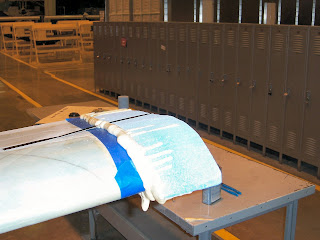At Oshkosh I sit in on any forums that have anything to do with speed, performance or efficiency.
As a result, this is where it starts getting really hairy - or should I say Harry?
At last year's Tandem Wing Spring Fling in Iowa City, I met a character, name of Harry Hinckley. Harry was modifying Greg Zimmerman's SX-300 for the upcoming AirVenture Cup race. One of the crazy things that Harry was up to was pulling his induction air from the cooling inlets. The idea here was to help reduce the drag of a separate inlet to feed the engine.
I thought it was probably kind of hair-brained and looked like a lot of work. As it turned out, Harry & Greg took second place in the Sport Class at a blistering 302.27 mph. See the rest of the results of the 2007 AirVenture Cup race. They were 11 mph faster than the closest SX-300!
So here is my attempt at having an internal induction air system. One of the hard parts was finding a suitable material to form the shape. After trying some hard plastic tubing that was difficult to shape, I stumbled across foam pipe insulation at the hardware store. I packed it with oil-dry to keep it from collapsing in the bends.
Once I had it duct-taped and safety wired in place I wrapped it with clear packing tape to make the interior as smooth as possible. I then gave it a single wrap of BID and spiral wrapped it with peel ply. In a couple of days, once the epoxy has firmly set, I'll slit the fiberglass, remove the foam, then glass over.
Initial concept using a shop vac hose.

Foam taped in place

































